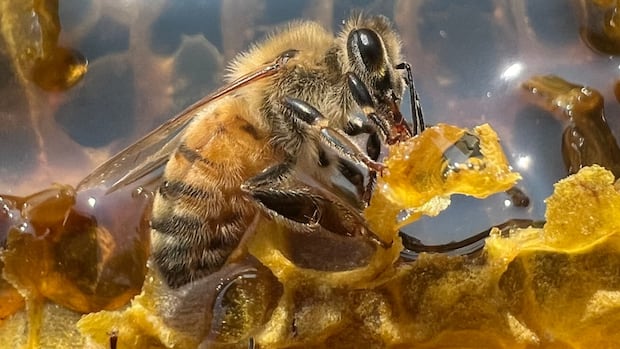How long was Mars warm and wet?

The ongoing debate about how warm and wet the climate on Mars was in the distant past continues with new evidence from the Curiosity Rover. The latest findings suggest the environment could either have been salty and icy or alternating between warm and wet, and cold and dry.
Ever since the first telescopes looked at Mars, it appeared to be covered in long lines that looked like channels, or in some minds, artificial canals built by Martians.
When we finally sent the first robot there that successfully went into orbit around Mars in 1971, there was no sign of a civilization on Mars — but there were many dried up river channels and lake basins covering what is now a desert landscape. This indicates Mars had a warmer and wetter past several billion years ago.
The surface of Mars today cannot support liquid water because the temperatures seldom rise above freezing and the extremely thin atmosphere provides such low air pressure that any liquid water would quickly boil away. Any water that remains on Mars today is frozen in polar caps or underground in permafrost.
So what caused the climate of Mars to change so dramatically?
NASA’s Curiosity Rover has been exploring Gale, a crater on the planet’s surface, since 2012 and has shown us that the crater was once a lake.
Recent analysis of the soil looked at isotopes of carbon-rich minerals called carbonates that, like time-capsules, preserve clues about what past environments were like as the rocks formed.
Isotopes are different versions of elements, like carbon and oxygen, that are either lighter or heavier. When water evaporates, the lighter versions of these elements in the ancient soil evaporate, leaving the heavier ones behind in the carbonate rocks.
By comparing these carbonates to those found on Earth, scientists were able to reconstruct the past climate of Mars and determine how warm and wet it may have once been.
The ratio of heavy isotopes in the Martian carbonate rocks in the Gale crater were significantly higher than any similar measurements on Earth, or anywhere else on Mars, which showed they underwent extreme amounts of evaporation.
The results suggest two possible scenarios that, in some combination of the two, created these heavy carbon and oxygen-enriched rocks. Either the climate involved extreme swings between wet and dry, where the land was flooded, then water with the lighter isotopes evaporated very quickly. Or the climate remained so cold that water was trapped in ice in extremely salty conditions that would have allowed the lighter elements to escape.
This means that Mars may have cycled through periods of being more habitable to less habitable, where any presence of liquid water on the surface was only temporary. That’s isn’t a good environment to sustain life on the surface — unless that life disappeared before these carbonates formed.

This is the latest in a long history of studies trying to piece together the past climate of Mars. Others have suggested the red planet once had an ocean.
Whatever the case, Mars reached a tipping point about three billion years ago, where it transitioned from warm and wet to the cold and dry climate we see today. Whether that warm period was long enough for life to take hold is still an unanswered question.

Mars is proof that planets can change dramatically and that change is constant.
Venus is another example: a runaway greenhouse effect due to a thick carbon dioxide atmosphere has raised temperatures at the surface to about 465 C, hot enough to melt lead and to boil away watery oceans that were once thought to exist on its surface.
Now we are seeing the Earth change before our eyes. Increasing levels of greenhouse gases from fossil fuels are heating our own planet, leading to more greenhouse gases like water vapour evaporating into the atmosphere, and methane being released from thawing permafrost.
We’re not anywhere near a runaway greenhouse effect like we’ve seen on Venus, but we are moving toward a less habitable planet.
Storms on Earth are becoming stronger, fuelled by warmer sea water. Wildfires are more common. Ecosystems are losing biodiversity, species are going extinct at unprecedented rates and the melting of ice at our poles is accelerating.
Climate scientists are warning that we could be approaching a tipping point toward increased warming.
These changes are on a planetary scale and while our planet goes through natural cycles of warm and cold, records suggest that human activity, specifically adding more carbon to the atmosphere, is increasingly speeding up the process.
Mars is stark reminder of how a planet that may have once had life loses that ability.
It does make you wonder: how many more devastating hurricanes and droughts are we going to suffer through before we move ahead on reducing our impact on the climate?




